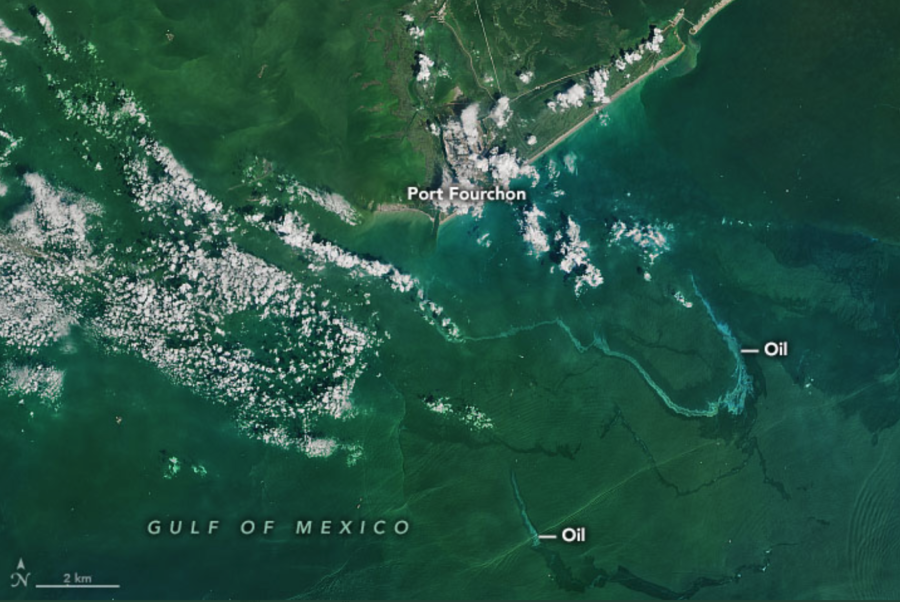The New Generation of Storms: Hurricane Ida
Photo found on Twitter @NASAEarth
Hurricane Ida left a trail of oil. Federal and state agencies and private companies are working to find and contain leaks in the Gulf of Mexico.
Hurricane Ida swept across the United States affecting much of the South as well as the East Coast last week, and though the rain has stopped our Nation is still dealing with the consequences of the hurricane. As of last Friday, there have been at least 82 confirmed deaths caused by Ida.
New York City Mayor Bill Deblasio said, “We have to change our entire mind-set because we’re being dealt a very different hand of cards now, and it’s not just us, we saw the destruction of Hurricane Ida in Louisiana. We’ve seen what’s happening in the Southwest with unprecedented drought. We see what’s happening with the wildfires in the West Coast. We all understand this is coming from a climate crisis.”
At the Federal level, President Biden visited Louisiana on September 3rd to survey damages caused by Hurricane Ida. “This isn’t about being a Democrat or a Republican. We’re Americans and we’ll get through this together,” said the president. “These extreme storms, and the climate crisis, are here….we must be better prepared. We need to act.”
According to U.S.News, despite the evacuations, many hospitals needed to keep their emergency rooms open, some even remaining fully operational even with winds blowing off parts of the roof and buildings, debris breaking windows, and flooding.
Thousands of Louisiana schools, hospitals, and homes are reeling from the effects of the storm and some are even still without power. Last week at Lady of The Sea General Hospital, winds ripped off a decent amount of the roof, and as a result, the Coast Guard was called to evacuate several patients. 160 patients were also evacuated from Ochsner Health, Louisiana’s largest hospital system as a result of flooding and power issues. This evacuation holds a special challenge when it comes to patients dealing with COVID-19, and the consequences of this evacuation on the overall hospital system of Louisiana remain unseen.
Louisiana and other States in the South were not the only part of the Nation that was affected. After coming inland, Ida advanced North, hitting the Northeastern States particularly hard, with rain and flooding ravaging many communities. Federal and State Officials in the Northeast promised to strengthen infrastructure and emergency procedures after Ida’s remnants swept through the region, according to the Washington Post. According to these officials, both people and assets are being provided to help deal with the aftermath of the 6th most damaging Hurricane the United states has ever experienced.
We need to further our efforts of ensuring hospitals and Infrastructure are prepared for this new generation of storms caused by climate change.



